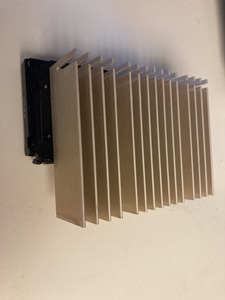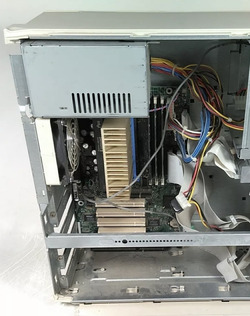I have a 300MHz Klamath and 333MHz Deschutes with a tall heatsink like that, and a 400MHz which has a similar but shorter heatsink (stands only as high as the CPU cartridge).
I think the 300 and 333 both came from a pair of Dell XPS machines that I stripped. I kept one of those cases.
I've used them fanless with some open air testing and such, but they get so hot you can't touch them without burning your hand.
As you'd expect the 333MHz Deschutes runs the coolest, under stress I remember it being 10C cooler than the 300MHz Klamath. Not sure about the 400MHz Deschutes with the shorter heatsink, I just remember burning myself the first time I used that one.
It was good enough for Dell but I think I'd be uneasy running them that way in a permanent build, except maybe if I was rebuilding the XPS mentioned earlier.
A concern of mine is how much heat it conducts to the motherboard VRM. My XPS mobo was an Intel AL440LX or whatever, and 440BX versions would be SE440BX-1/2/3. Those are high quality motherboards and also not super valuable so I'd be a little less worried about them. If I was using a retail DIY board of some kind like an ABit BE6 or whatever, I'd definitely want to dissipate the hotspot that the CPU is creating.
If you're worried about it, a modest fan as you've suggested would go a long way.
The nice thing about a big heavy heatsink like that is if the CPU fan dies, it'll be okay.
Downside is that it's heavy. Since you're new to slot-1 I'll mention it needs a support bracket which really isn't optional with one that's as heavy as this.

